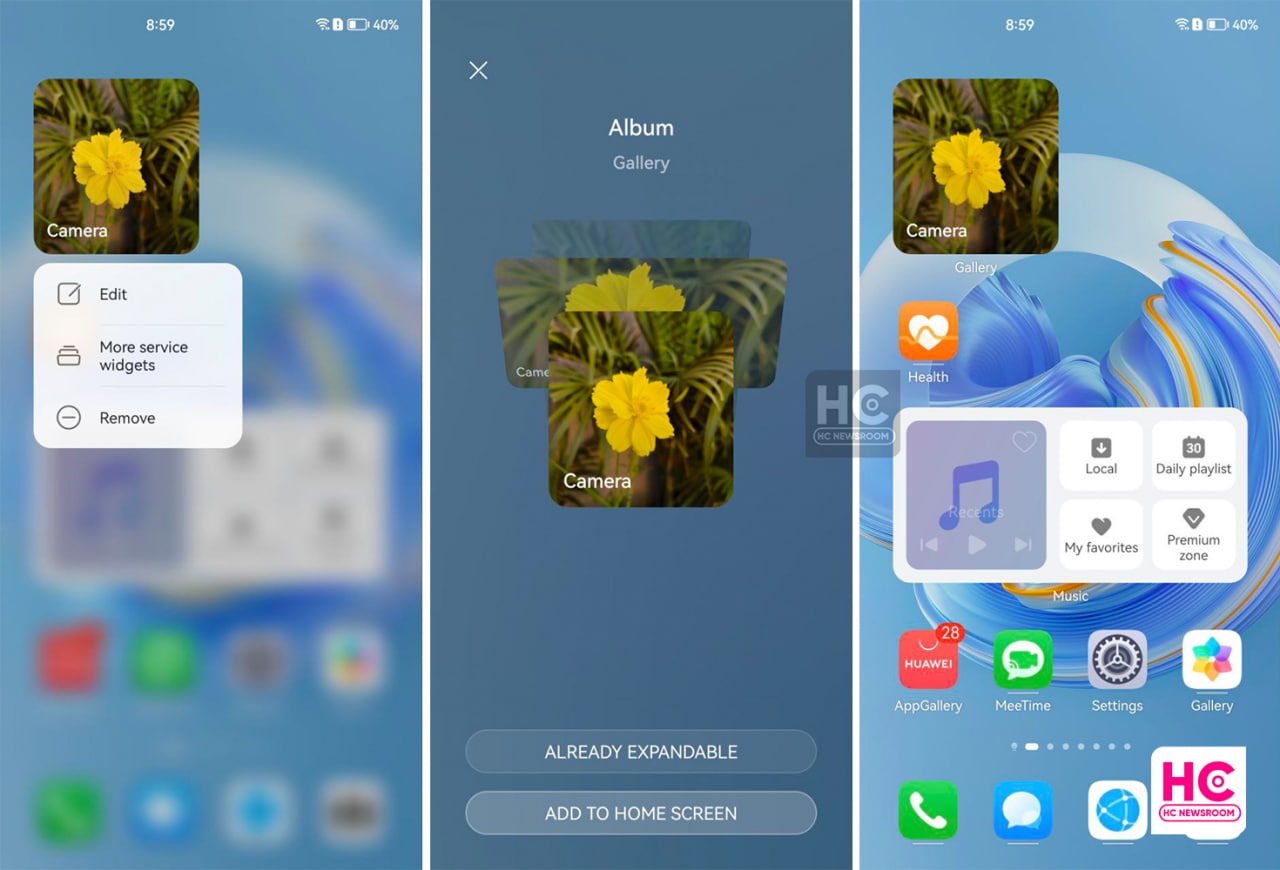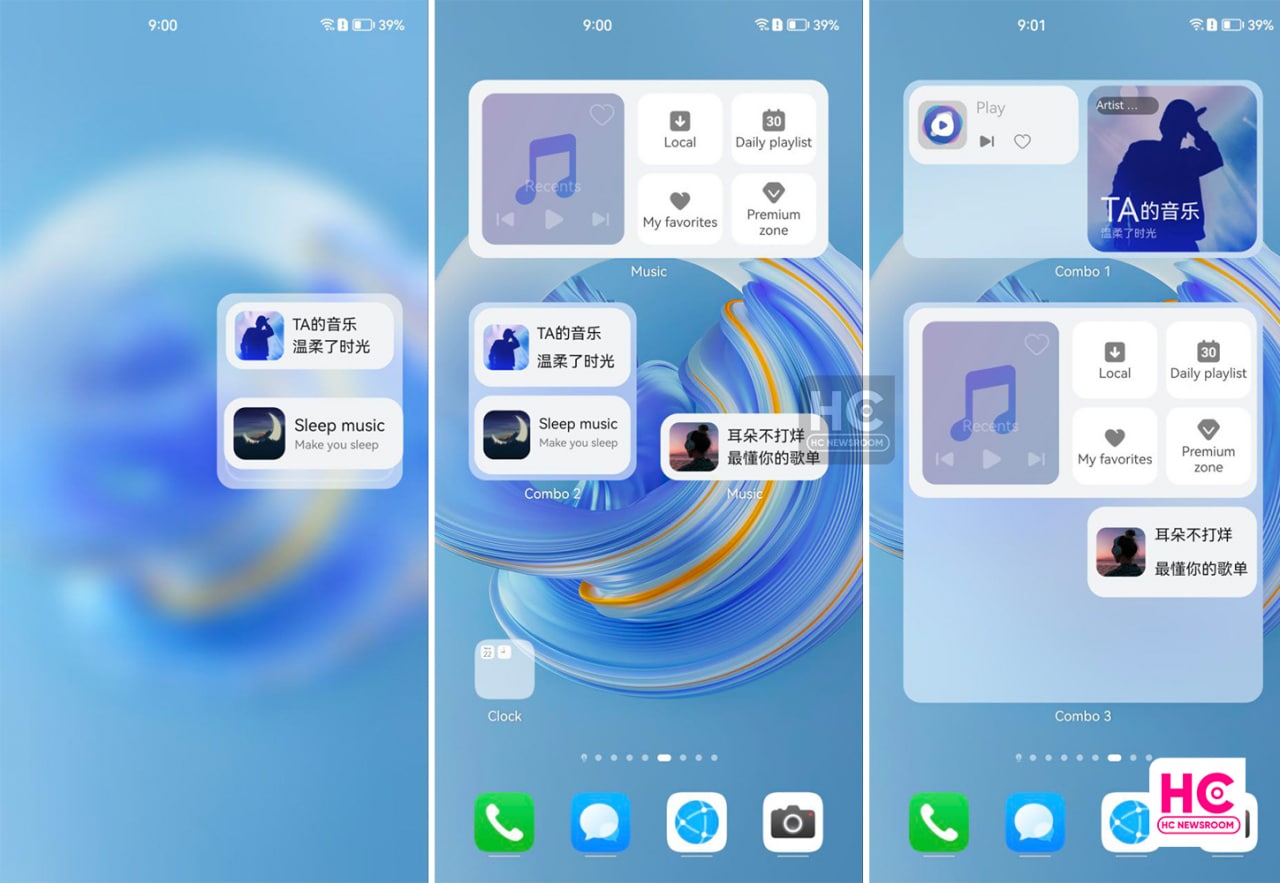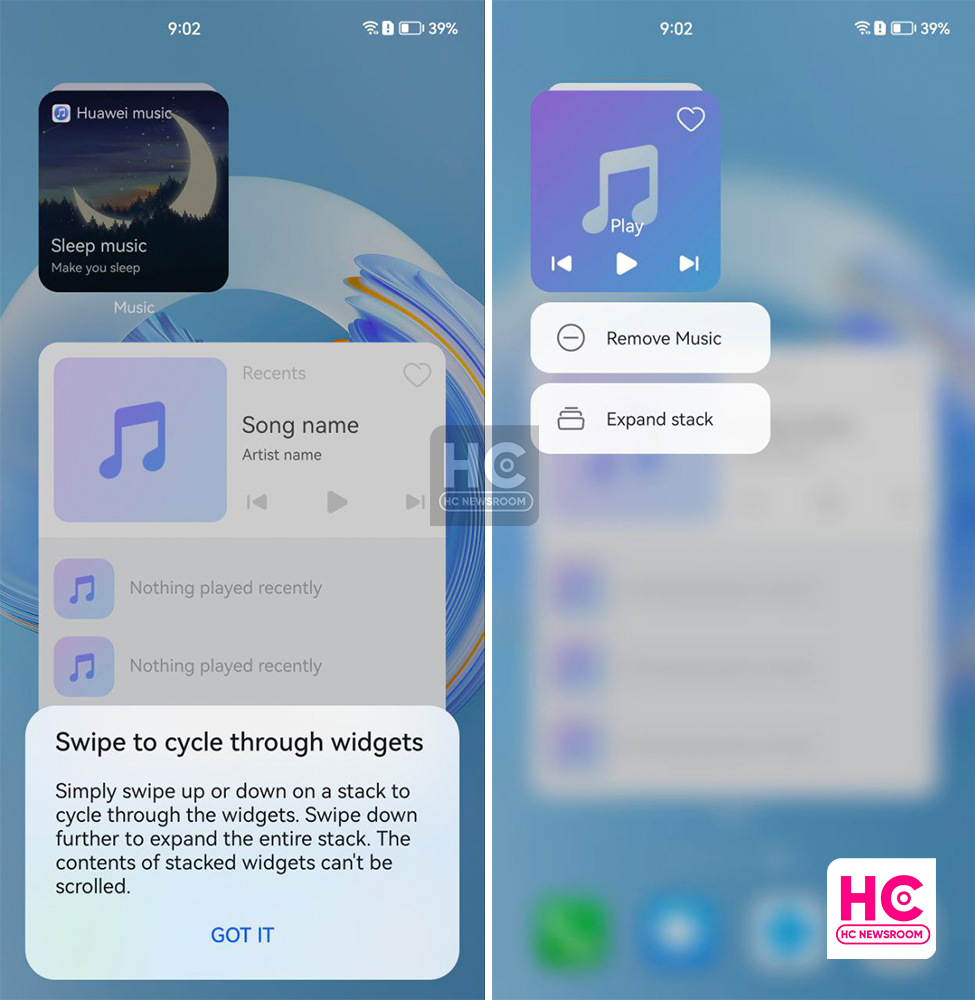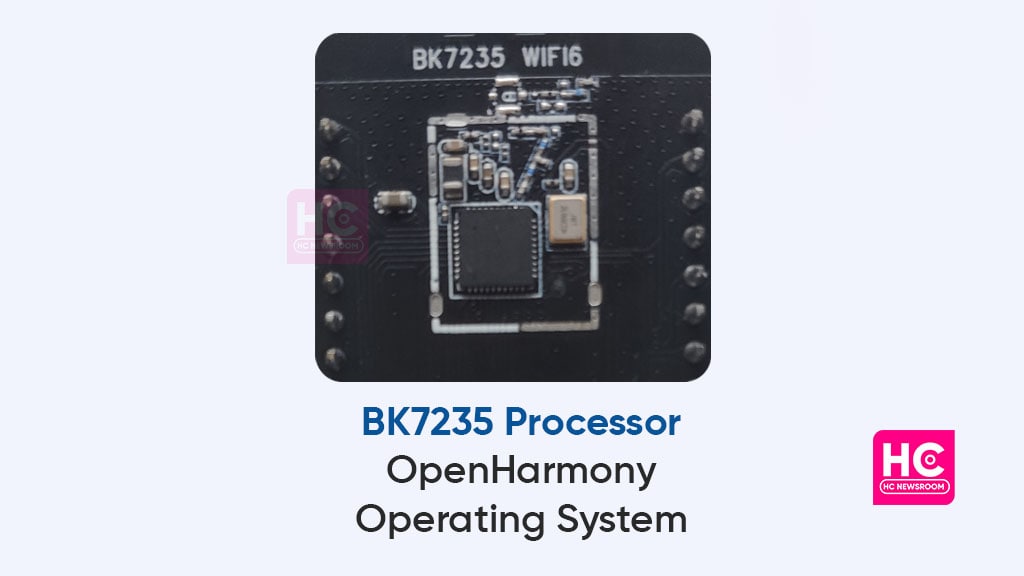Huawei MatePad Pro 12.6 November 2022 update rolling out in Europe
Huawei Sound Joy smart speaker improves system stability with new update
Broadcom BK7235 processor combines with OpenHarmony
Huawei MatePad Pro 10.8 gets SuperHub feature with HarmonyOS 3 public beta
Huawei MatePad Paper new update brings unique changes to Notes app
Huawei Enjoy 50z with 50MP triple camera will launch in December
Huawei Nova 10 SE will launch on December 2 in China
Huawei launched smartphone broken screen offline services
Huawei Mate X3 sample version begins to rollout, launching soon
Huawei Nova 10 series is now available nationwide in Malaysia
Huawei Nova 9 SE grabs November 2022 EMUI update
Huawei P40 Pro grips November 2022 EMUI update in Europe
Huawei MatePad Pro 12.6 November 2022 update rolling out in Europe
Huawei Mate 40 Pro receives November 2022 update [Global]
Huawei P50 Pro is getting EMUI 12.0.1.286 in Europe
Download Huawei Celia Keyboard [11.0.5.309]
Download Huawei HMS Core app (6.8.0.332)
Download Huawei Health app (13.0.1.300)
Download Huawei AppGallery App (12.6.1.303)
Download Huawei M Store app (62.5.2.300)
Huawei MatePad 11 gets new 8GB + 256GB storage version
Huawei MatePad SE tablets sold out in Indonesia
Huawei MateStation X 2022 specs leaked ahead of launch
New Huawei MateStation X 2022 all in one PC is coming
Huawei MateStation X 2022 to feature 12th gen Intel i9 processor
Huawei Watch Buds leaked in short hands-on [Video]
Huawei Watch Buds leak shows earbuds inside a smartwatch
Quick message reply feature rolling out for Huawei Watch D with a new firmware update
Huawei Band 7 NFC Edition now avails at amazingly low price
Huawei Watch 3 Pro new gets taxi-hailing feature
Published
on
By
Service widgets are amazing and Huawei has built them deep into the HarmonyOS ecosystem. HarmonyOS 3 comes with two new handy features called stack widgets followed by group widgets, which we’ll explore in this session.
Service widgets:
Service widgets allow you to preview app info and access key features without opening the app. You stack different service widgets together with great ease or to save screen space.
First, you can swipe up an app icon to expand its service widget and touch on the pin icon on the top right corner to add its service widget to the home screen.
Alternatively, tap and hold an app icon with a widget bar indicator, then touch Service widgets, select your desired widget style and touch Add to the home screen. This will add that app widget to your phone’s home screen. However, there are different widgets size to choose from.
The difference between these two features of adding service widgets could be explained like these:
- Pinning service widget is a quick way
- While going for Service widgets will allow you to choose different sizes before you can even add that on the home screen.

How to group widgets:
HarmonyOS 3 has a new Widget group feature, which allows you to put app widgets of different sizes into a large folder and access them with one tap, similar to applications.
To do so, hold and drag a service widget to another service widget of any size until the two widgets partially overlap with each other. Tap and hold down on a service widget group to edit or remove it. That’s how you can create a group of widgets.

Stack widgets:
HarmonyOS 3 brings you the ease of managing home screen space with stack widgets, just hold and drag a service widget into another widget of the same size. Make sure you hold and align these widgets completely until they overlap each other.
Now you can change these widgets by swiping up or downwards as they are now stacked in a single place. 
Huawei HarmonyOS ecosystem will be stronger than Android
Super Hub feature rolling out for Huawei Mate 30 series (HarmonyOS 3)
Most of Deng Li’s smartphones are from the Huawei ecosystem and his first Huawei phone was Ascend Mate 2 (4G). As a tech enthusiast, he keeps exploring new technologies and inspects them closely. Apart from the technology world, he takes care of his garden.
Huawei Nova 9 SE grabs November 2022 EMUI update
Huawei steps in top five Metaverse patent ranking
Huawei Enjoy 50z with 50MP triple camera will launch in December
Published
on
By
A few days ago, Huawei began to roll out the November 2022 update for the MatePad Pro 12.6 tablets, and now it’s expanding in Europe. It’s a beneficial update with a bunch of security tweaks for the device.
November 2022 security patch holds a huge package of fixes and improvements. It ends more than 40 security threats and exploits in the system and strengthens the device against harmful bugs and malware.
Hence, we recommend you install the update once it appears on the notification shade. Eventually, Huawei MatePad Pro 12.6 users in Europe can identify the November 2022 update with HarmonyOS 2.0.0.250 build number.
In case you cannot get this update onboard, then don’t worry. You can lean into the update section to obtain the latest firmware for your respective tablet.
Just head to the Settings application. Further, select System & Updates followed by Software Updates. Now follow the on-screen instructions carefully. To the available version, tap on the Download and Install button.
Update Instructions:
It’s quite easy to check for new updates. However, make sure of the following norms before conducting the installation procedure:
- Your tablet must have a storage space of 227MB
- A strong WiFi/mobile data connection is required for a buffer-free download of the package.
- Take a backup of your important data beforehand
- Do not forcefully turn off the tablet, once the installation is started
Huawei HarmonyOS is better than Apple!
Yes, that’s right! Huawei’s self-developed operating system – Harmony is far better than Apple’s. Comparatively, HarmonyOS serves many gadgets, including smartphones, tablets, smartwatches, smart TVs, smart cars, and more.
Meanwhile, Apple uses a separate operating system for every smart device. For instance, iOS, iPadOS, macOS, and so on. This shows that HarmonyOS is quite efficient and is easily compatible with a variety of gadgets.
Moreover, Huawei is constantly making efforts to make the respective operating system bigger than Android and iOS. And it seems like we don’t have to wait much to catch such changes in the HarmonyOS ecosystem.
Editor’s Choice: Huawei uses HarmonyOS for different devices as compared to Apple
|| Source ||
Published
on
By
Huawei Sound Joy is receiving a new update with stability improvements globally. Besides, the latest firmware brings a handful of fixes to the known issues and security exploits in the device system.
According to the input revealings, the Huawei Sound Joy stability improvements update is rolling out with HarmonyOS 2.1.0.30 (H100SP29C00). Notably, the update is approaching via OTA and may take 2-3 days to reach all users.
Speaking of the changelog, the fresh firmware mainly aims to improve the stability aspects of the device. It optimizes the functioning and makes the internal system reliant and more durable.
On the flip side, the update resolves some irritating issues that have been affecting the performance of the smart speaker for a long time. As a result, this firmware installation will enhance the overall user experience.
Hence, if you are a Huawei Sound Joy owner, we recommend installing this update as soon as it appears on the notification panel.
Full Changelog:
- Build Number: HarmonyOS 2.1.0.30
Changes:
- Improved device stability
- Fixed some known issues
Points to Remember:
You can install the update by navigating to the Huawei AI Life App on your smartphone. Further, tap on the Sound Joy card and then Firmware Updates. However, before heading for the downloading steps, take the following measures:
- Battery level should be above 20%
- The Bluetooth connection between your phone and speakers must be stable
- In case the installation fails, try again
Huawei Sound Joy
Huawei Sound Joy is the ultimate pack of immersive audio quality. It is Huawei’s first portable speaker with Devialet technology and exhibits a four-speaker unit system.
In terms of layout, the device holds a cylindrical structure with 202 mm height, and 73 mm diameter, and weighs up to 680 grams. It also supports Bluetooth 5.2 and high-end audio codecs such as AAC and SBC.
The speakers pack a huge battery of 8800mAh and offer a playback time of 26 hours. Besides, it bears a 40W fast charger that can charge the device in just 10 minutes.
[Source]
Published
on
By
Broadcom Integration Group recently launched a new BK7235 high-end processor and merged it with the OpenHarmony operating system. The chipset aims to enhance IoT connectivity and bring new improvements in the security aspects.
OpenHarmony is well-known for its compatible connections as well as all-scenario operations. It contains an advanced and tech-pack connectivity system that can support all smart devices effectively.
And to make these connections more reliable, Broadcom group has integrated a BK7235 processor in the OpenHarmony framework. Accordingly, it will facilitate the operating system with rich storage and a robust security structure.
On the other hand, it can provide numerous immediate options for commercial purposes. For instance, lightweight audio quality, new upgrades for functions, controlling management, and more.
Let’s understand the high-end BK7235 processor in detail.
BK7235 MCU Chipset – Two Versions
Broadcom BK7235 chip is an MCU (micro-controller unit). It has two variants: single-core and dual-core. The single-core chip installs a 656KB RAM and supports 26 GPIOs (General Purpose Input/Output), and a 5V direct power supply. It is appropriate for 5V smart home gadgets.
Meanwhile, the BK7235 dual-core version packs 800KB RAM and a high-speed 8MB Dynamic RAM (DRAM). Further, it supports single and multiple cloud connections, 48 GPIOs, dual microphones, a CIS camera, 16-bit LCD, and significant coding functions.
BK7235 processor – efficiency
Both versions use a self-developed security infrastructure to offer tough security protection for the entire operating system. Aside from the regular security components, the processor also equips the powerful P-384 encryption protocol to access verified algorithms.
It’s worth mentioning that the respective chipset has also qualified for the PSA level 1 safety certification. Hence, it will make useful changes in the OpenHarmony operating system.
Moreover, the processor easily operates and manages common, commercial, and authorized passwords. For instance AES, RSA, ECC, SM2, SM3, SM4, and more. Together, these qualities will help in providing efficient security protection to the IoT and other network devices.
In addition to the magnificent safety functions, the BK7235 chip is eligible for Wi-Fi 6, and Bluetooth 5.2, and supports various third-party network connections. Hence, the chipset could prove a beneficial implementation for the OpenHarmony community. 
(Source)
Copyright © 2022 Huaweicentral.com